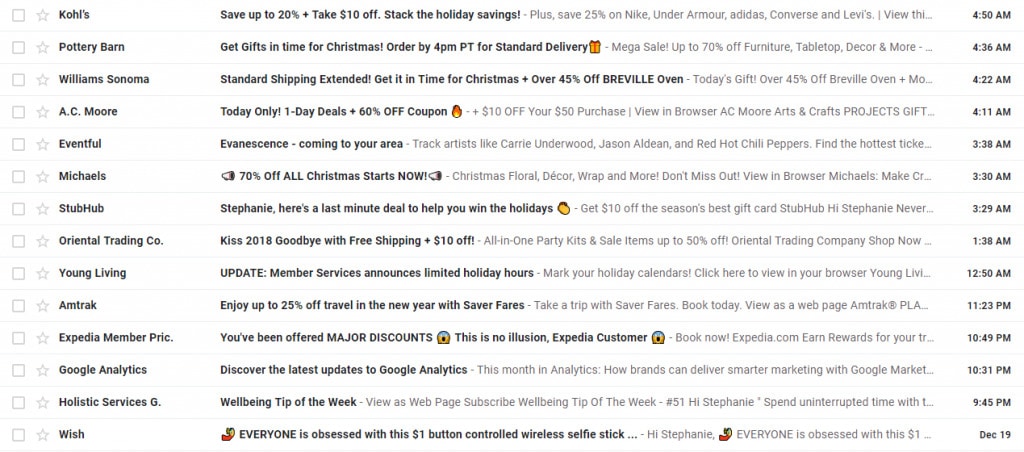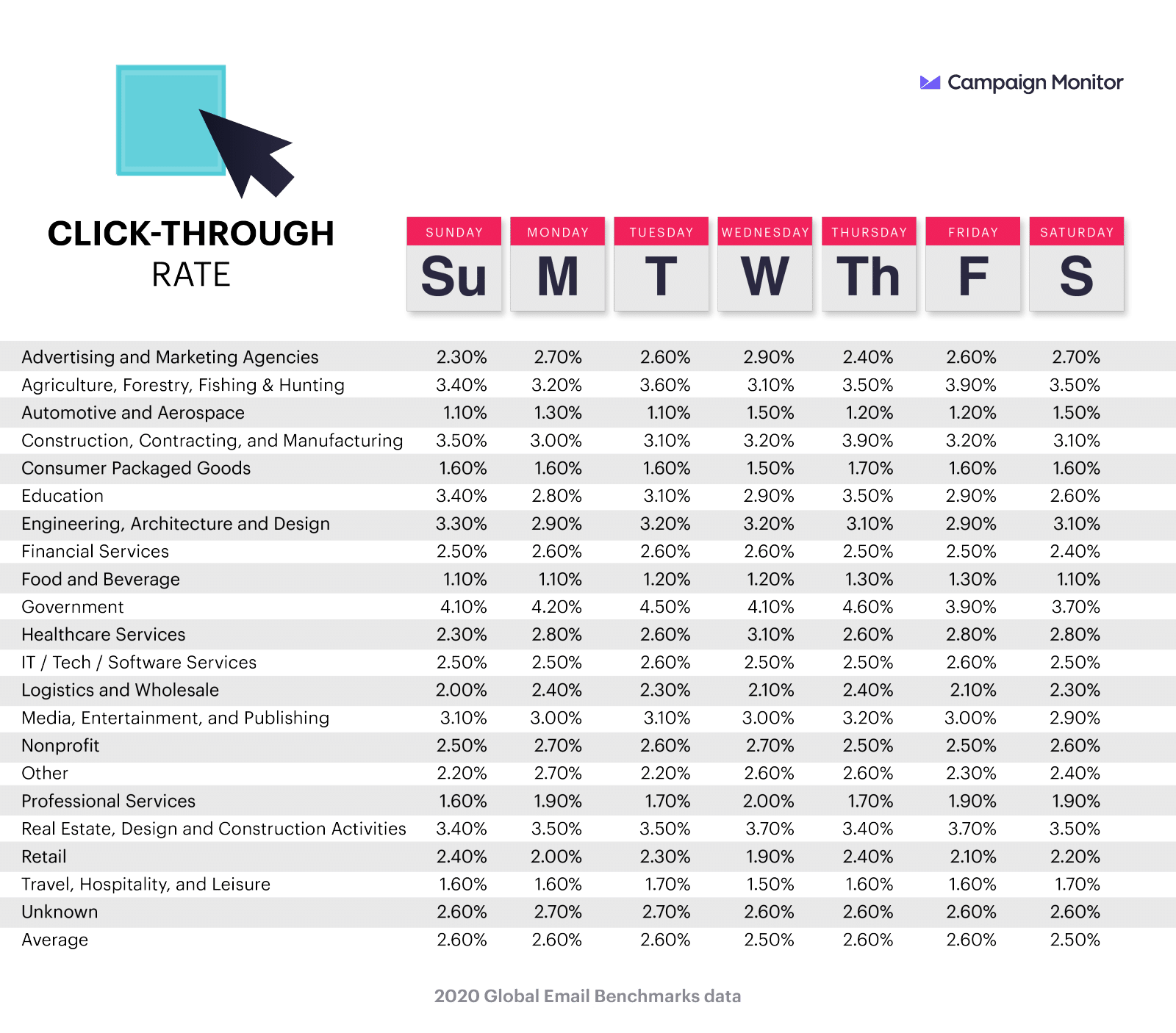An email metrics guide: Best practices, tips, and examples
Marketing is about creativity, imagination, and flexibility. However, there’s another important aspect that separates good marketers from great marketers.
Data-driven decisions.
Raw data provides you with insight — they help eliminate the guesswork. Once you know where your strengths lie, how your audience perceives your brand, and where you need to improve, finding the next logical step becomes much easier.
This email metrics guide will cover some of the most important data points you should be tracking, tools to use, and even some handy metric hacks every marketer should know.
What are some of the most important metrics?
While there are well over a dozen email marketing metrics to track, for the sake of brevity, we’ll only cover some of the most fundamental here.
-
Open rate: How many subscribers open your emails.
-
Bounce rate: How many subscriber addresses didn’t receive the email.
-
Click-through rate: How many of your email links are clicked. They can lead users to a social profile, a product page, or even a download link.
-
Conversion rate: After your click-through link was followed, this measures how many people completed the desired action. This will measure whether they actually followed your social profile, bought your product, or downloaded your e-book.
-
Forward rate: How many people forwarded the email to others on their list or who shared it on social media.
-
Unsubscribe rate: How many people unsubscribed may seem discouraging. Still, it can actually be a positive — it shows how much room is now open for new, active addresses on your list.
These are just a few of the core email metrics you should know about. It’s wise to look into each in more detail and explore other, more lesser-known data points as well.
Lesser-known tips and email metric hacks
No email metrics guide would be complete without covering some of the lesser-known hacks you can use to track the success of your email marketing strategy.
Low open rate? Improve your subject line
Tracking a couple of the most basic metrics can reveal actionable insights about two of the most fundamental aspects of your content.
If you see a low open rate (the average for campaigns is just over 24%), it’s a direct sign that one of two things needs to be improved. The most likely culprit is your subject line. A strong subject is key for getting people to open your email and avoid sending it to spam.
Source: Campaign Monitor
It could also mean your preview text needs work, but the solution is to make your subjects stronger. Use specifics, numbers, and emojis. Don’t forget to ask interesting questions, promote deals, and even personalize your content to your segments.
High click through but low conversions? Improve the offer
Sometimes you’ll find a high click-through rate fails to bring the conversions you want. This means people are clicking the links in your email and following through to the desired location, but they aren’t completing the profitable action as you hoped.
While a low click-through rate can mean the call to action (CTA) needs to be reworked, a low conversion rate can mean one of the following three things:
-
Clickbait: The CTA should be honest about what it can deliver. If your customers click through only to find they were promised something that didn’t materialize, they may not complete the action or even stay subscribed.
-
Problem completing action: Whether it’s a broken sales portal, a dead link, or a faulty subscribe button, a technical problem can be to blame when your click-through rate outruns the conversion rate by a significant amount.
-
Second thoughts: While some people may find your offer honest, they may simply have second thoughts once it comes time to commit. This is most common when making a purchase. If this consistently becomes a problem, try lowering the price of the product or bundling it with another.
For those who have trouble getting the initial click through activity, improving the CTA isn’t the only possible solution. You could also look into shifting your email schedule, as the day they’re received can impact click-through activity.
Source: Campaign Monitor
If you have your email list segmented by industry, it may help to automate content to send out on specific days to boost click-through rates. Once you have those, you can focus on tweaking your CTA, website functionality, and offers to boost conversions.
Looking closer at bounce rates
While we covered bounce rates, not everyone understands there are two types. A soft bounce is usually temporary, and trying again may allow the message to reach its destination. The most common cause of a soft bounce is the recipient’s inbox being full, or a simple problem with their email provider.
Hard bounces are those that will continue to bounce no matter how many attempts you make to resend. They’re not temporary and usually result from the email address being incorrect or deleted. If you try to resend a bounced email after a day or two and it fails again, it may be wise to abandon that effort.
There are consequences for sending too many bounced emails. Hard bounces send a signal that the server has blocked your email. When this happens enough times, the server could start viewing your content as spam.
The bigger picture: How to measure changes over time
While tracking individual metrics helps reveal more about your email campaigns, marketers need to be equally concerned with the bigger picture.
This involves how your list is progressing and how the reputation of your brand and its email content is evolving. Most importantly, it means understanding what kind of return you’re getting from your investment into email marketing.
How to measure overall list growth
While your email tracking tools may provide you with insight on how many people have subscribed or unsubscribed, these data points alone don’t tell the whole story about the rate at which your list is growing.
To get this number, you’ll need to complete a simple equation:
(Number of New Subscribers – Number of Unsubscribes) / Total Number of Addresses on List
Once you have that number, multiply it by 100, and you’ll have your list growth rate. Don’t be discouraged if it’s low. Simply focus on list-building techniques, loyalty programs, and better content until the metric begins going up.
Engagement over time
Usually, the best way to track engagement over time is through the automated tools available on your email service provider. You can also track it manually, noting what days of the week or even what times of the day seem to get the most engagement.
For the purpose of this entry, engagement is everything from opening emails to responding to clicking through and completing the desired action.
As shown, your engagement can change based on when you send your content and which industry you’re in. When you track engagement — either manually or automatically — it’s a wise idea to keep track of results and create a spreadsheet. Remember to note what changes you made and when. Over the course of weeks, months, and years, you can see what changes helped boost engagement.
Overall return on investment (ROI)
While email marketing can deliver double or triple the ROI of other marketing platforms like social media, you should still aim to get as much out of it as possible.
When you’re looking to see how much you’ve gained from your email marketing efforts, you may be tempted to count subscribers, tally up shares, and view total engagements. However, from a financial perspective, there’s a simple formula to follow to see how much money a given campaign has made.
Take the money made from a campaign minus the money spent to execute it. Then divide that number by the money invested into it, and finally multiply the quotient by 100. This provides a look at how much return your campaign has generated, and may reveal whether it’s worth it to keep going.
Tools to measure email metrics
There are plenty of tools on the market to measure email metrics. By getting automatic data analytics delivered straight to you every time you log into your program of choice, you can use the insights to further your campaign efforts. Popular tools include:
-
Google analytics: Google’s built-in analytics tools can track plenty of content, including email. This setup can also be integrated with websites, apps, and more for a holistic picture.
-
Emma: Whether you’re creating beautiful emails with a simple interface, tracking metrics, testing variations against one another, or turning insights into strategies to carry campaigns forward, this is arguably the most all-inclusive email tool available.
Those are some of the tools you can use to gather analytics, but how you choose to put them into action is up to you.
Wrap up
When you’re an email marketer, data is crucial to your success. Gathering data means knowing what to look for and knowing how to put it into action. Remember:
-
Everything from open rate to conversion rate can be useful to you
-
Some metrics help you see the bigger picture of your email marketing
-
Track metrics over a long period for greater success with campaigns
Your subscribers’ email service providers can be your campaign’s best friend or biggest foe. If you learn more about them, you might just see your metrics improve.
MOST RECENT ARTICLES
Want to engage your audience and grow your brand? Try Emma's robust easy-to-use product today.















